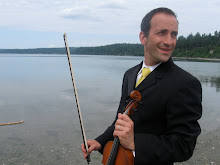Dear Families,
Welcome and welcome back. Here are a few links and reminders for new families.
1. We will make soup each week. Please bring a vegetable when possible.
2. Here is a link to the late fall welcome letter. I have also posted a copy outside the room.
3. Here are lyrics to many of the songs I sing in class.
When possible, I will post a copy of my blog entry or article outside the classroom. I have heard from some parents that this works better for them. The electronic versions will remain (ideally for months or years ahead) as an easy way for you to retrieve an article or entry if you seek to share it with a friend weeks or years from now.
Over the next few weeks, I will preview some new books in the Katherine Dickerson Memorial Library (in the lobby upstairs from Butterfly classroom). Many parents from past classes have found 1, 2, 3 . . . The Toddler Years by Irene Van der Zande to be extremely helpful. It comes from the wisdom of Magda Gerber and RIE put into practice at the Santa Cruz toddler center. Its strength is that the chapters are short, direct, and effective. Parents find the chapters on fighting, biting, eating, toilet learning, tanrums, sibling rivalry, and separation ("Saying Goodbye is Sad") particularly helpful. Although the writing style is very different from the densely wrought prose of Whole Child/Whole Parent (more on this in a coming week), the gesture toward childhood is similar. Rather than reacting to our toddler's frustrating behavior with disappointment, we accept it--perhaps even welcome it--as an opportunity for transformation and growth. We can guide our children toward more appropriate behavior with calmness and clarity because we have accepted that these behaviors belong to childhood--are normal, even healthy.
I have summarized the chapter "Planning Ahead" and added some of my own thoughts to structuring our days with a toddler in mind.
While many parents find 1, 2, 3 helpful, it does not necessarily reflect what they or I would do in every situation, nor probably what most Waldorf Early Childhood teachers would recommend in every situation. In particular, the manner in which Waldorf teachers approach giving choices is a bit different. Rather than creating a myriad of potentially confusing questions throughout the day ("What color cup do you want? Do you want the red shirt or the blue shirt?), we foster the children's development of autonomy by providing ample amounts of time to play with open-ended materials. As long as the child's activity is safe, we allow the child to choose and create how to play. We develop our children's sense of trust when parents make choices about warmth, playdates, bed time, meals, and the like.
With warmth and light,
William Geoffrey Dolde
Wednesday, October 29, 2008
Subscribe to:
Post Comments (Atom)

No comments:
Post a Comment